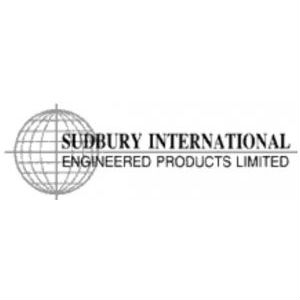 Some ductwork interface considerations for Sudbury International fabric expansion joints
Some ductwork interface considerations for Sudbury International fabric expansion joints
February 6, 2019 REDWIRE is news you can use from leading suppliers. Powered by FRASERS.
Posted by Sudbury International Engineered Products Limited
Expansion Joints, (fabric, metal, rubber, dog-bone), Automatic Recirculation Valves For Pumps, Specialty Sootblowers, Se... Read more
Subscribe
Free REDWIRE e-newsletter

Sudbury International is a top supplier of non-metallic expansion joints for ducting applications.
Sudbury International Engineered Products Limited supplies non-metallic ductwork expansion joints for Canadian businesses. The interface connection of each of these expansion joints is critical. The joint flange (mounting frame or integral) and the connecting flanges are equally as important as the material selection. Users should also consider joint movement capabilities when designing a system for anchors, supports, and guides. Below are conditions that one should consider when facilitating the interface design.
Six types of movement
Businesses using Sudbury International ductwork expansion joints should note that flexible elements must not be used as anchors, supports, or guides. But they can design frames to accommodate these requirements if necessary.
Smart interface considerations for users of Sudbury International ductwork expansion joints including the following:
- Movement. There are six main types of movements that can occur: axial compression, axial extension, lateral movement, torsion or rotation, angular deflection or bending, and vibration. Independent, concurrent, and normal operating movement should also be considered.
- Setback. The distance the joint moves outwards from the gas stream should be taken into consideration when establishing the dimensions of duct-mounting surfaces.
- Breach opening. Face-to-face distance, or the distance between mating duct flanges in which the joint will be installed.
- Location of joints. Consider both the equipment and ductwork interfaces. Pay attention to potential interference from equipment appendages or ductwork stiffeners.
- Frame attachment. Joint attachment methods, stiffening, metallurgy, baffles (or flow liners), and frame loads are important factors to note.
- Interface tolerances. Expansion joints’ flexible nature reduces the need for very tight manufacturing tolerances for flexible elements, but users must define the interface tolerances for joints and their frames for connection to ducts or other components.
- Ambient conditions. Do not install expansion joints in areas of poor air circulation or of high temperature radiation. In addition, consider the work environment’s level of pollutants, which may attack the joints’ outer cover or frame materials if not addressed at the start.
- Insulation. Users should take care to insulate around the expansion-joint assembly properly when insulating ductwork. The connection point between the element and mounting frame should enable adequate cooling.
For more information, contact Sudbury International.
Share
Posted by Sudbury International Engineered Products Limited
Expansion Joints, (fabric, metal, rubber, dog-bone), Automatic Recirculation Valves For Pumps, Specialty Sootblowers, Se... Read more
